A fungi is a group of eukaryotic heterotphic organisms members of which have chitinous cell wall and are differentiated from other living organisms by their special vegetative structure and nutrient intake. Members of this group include yeast, rusts, mildews, molds, mushrooms etc.
Mycology
The discipline of bioscience that deals with fungi is called mycology. The term ‘’mycology’’ is derived from Greek word ‘mykes’ meaning mushroom and ‘logos’ meaning knowledge. So, mycology is the study of fungi.
It was first introduced in 1836 by M. J. Berkeley.
Mycology is the branch of biology concerned with the study of fungi, including their genetic and biochemical properties, their taxonomy and their use to humans as a source for tinder, medicine, food and entheogens as well as their dangers such as poisoning or infection.
Good to know
- Unicellular lower fungi: Synchytrium endobioticum.
- Unicellular higher fungi: Yeast (Saccharomyces cerevisae).
- Claviceps purpurea is also called ergot.
- Perfect stage: Teliomorph.
- Imperfect stage: Anamorph.
Nutrition of fungi
The fungi lack chlorophyll. Therefore, they cannot synthesiz their own food.
Depending on from where and how they get nutrition, fungi are of following types:
- Saprotrophs (= saprobes)
They obtain food from dead and decaying organic matter. They secrete digesting enzymes to outside which digest the substratum and then absorb nutrients. The majority of Ascomycetes are saprotrophic.
Examples include Aspergillus, Ascobolus, Xylaria, Mucor, Agarious. Rhizopus (bread mould) etc.
- Parasitic
Best safe and secure cloud storage with password protection
Get Envato Elements, Prime Video, Hotstar and Netflix For Free
Best Money Earning Website 100$ Day
#1 Top ranking article submission website
Parasite is an organism which lives in or on another organism (its host) and benefits by deriving nutrients at the other’s expense. They maybe facultative or obligate.
A facultative parasite is an organism that may resort to parasitic activity, but does not absolutely rely on any host for completion of its life cycle. They grow on a variety of tissues and often cause ‘soft rot’ of the tissue, e.g., Ustilago.
An obligate parasite or holoparasite is a parasitic organism that cannot complete its life-cycle without exploiting a suitable host. They absorb through specialized haustoria. The parasitic fungi that grow on surface of host cells and absorb food through haustoria are called ectoparasites or ectophytic parasites (e.g., Mucor, Erysiphe). When parasitic fungi grow inside the host tissue arc called endoparasites or endophytic parasites (e.g., Pythium, Puccinia).
- Predacious
Some soil fungi develop ring-like noses to trap annelids, nematodes etc. e.g., Arthrobotrys, Zoophagus, Dactylella etc.
- Symbiotic
They live in mutualistic relationship with another organism by which both are benefited. The two common examples are lichens and mycorrhiza. Lichens are symbiotic associations between fungi and algae. The fungal partner is a member of ascomycetes or basidiomycetes that provides water and nutrients, while the algal partner is a green alga or cyanobacteria that prepares food by photosynthesis.
- Mycorrhizas or mycorrhizae (fungus roots in Greek) are the mutualistic symbiotic associations between soil fungi and the roots of most plant species (95% of all plant families are predominantly mycorrhizal). According to the carbohydrate theory (Bjorkman, 1949), the plants that grow in soils deficient in P and N, and high intensity light develop mycorrhizas.
- The two most common types of mycorrhizas are the ectomycorrhizas (ECM) and the endomycorrhizas (also known as arbuscular mycorrhiza, AM or VAM). The two groups are differentiated by the fact that the hyphae of ectomycorrhizal fungi do not penetrate the cell wall of the plant’s root cells, while the hyphae of arbuscular mycorrhizal fungi penetrate the cell wall.
Habitat of fungi
Fungi are cosmopolitan and occur in air, water, soil and on plants and animals. They prefer to grow in warm and humid places. Hence, we keep food in the refrigerator to prevent bacterial and fungal infestation.
Xylophylous fungi
Coprophilous fungi
- Dung loving fungi.
- Is a kind of saprobic fungi group that loves to grow on animal dung.
- g. Ascobolus magnificus (cup fungi), Coprinus spp. (toad stool).
Epiphyllous fungi
Collateral fungi
- When a pathogen attacks a large number of host plants and perform its life cycle is called collateral fungi.
- g. Eryphae polygoni (attacks peas and various plants: 352 host species).
Pyrophilous fungi
- Growing on burnt substrata.
- g. Pyronema ompholodes.
Folicolous fungi
- Growing or living on leaves.
- g. Colletotrichum, Cercospora.
- Folicolous fungi are divided into:
Epiphyllous fungi: Alternaria, Cercospora.
Hypophyllous fungi: Candida albicans.
Fungal tissue
Plectenchyma (Gr. Plekein = I weave + enchyma = infusion i.e. woven tissue).
During certain stages of fungal development, the mycelium becomes organized into loosely or compactly woven tissues which is called Plectenchyma.
Or, plectenchyma is the general term employed to designate all types of fungal tissues. The hyphae specifically become fused together.
The Plectenchyma is of two Types:
- Prosenchyma
- Pseudoparenchyma.
- Prosenchyma
The loosely woven hyphae which are packed together in the form of more or less parallel to one another is called Prosenchyma.

- Pseudoparenchyma
The fungal hyphae which are closely packed, in the form of more or less isodiametric or oval cells resembling the parenchyma cells of higher plants in their cross section are called Pseudoparenchyma. They are usually thick walled.
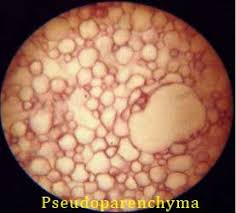
Both Prosenchyma and Pseudoparenchyma compose various types of vegetative and reproductive structures. Stroma is usually made up of Prosenchyma while scelrotium is made up of pseudoparenchymatous tissue. Both stromata and sclerotia are somatic structure of fungi.
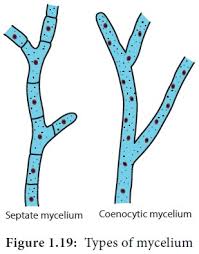
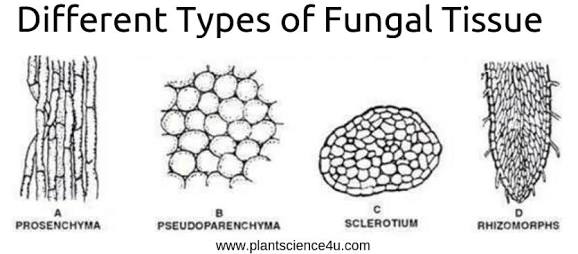
Hyphae of higher fungi
A hypha (plural hyphae, from Greek huphḗ means “web”) is a long, branching filamentous structure of a fungus. In most fungi, hyphae are the main mode of vegetative growth, and are collectively called a mycelium.
- A hypha consists of one or more cells surrounded by a tubular cell wall.
- In higher fungi, hyphae are divided into cells by internal cross-walls called “septa” (singular septum).
- Septa are usually perforated by pores large enough for ribosomes, mitochondria and sometimes nuclei to flow between cells.
- The major structural polymer in fungal cell walls is typically chitin, in contrast to plants and oomycetes that have cellulosic cell walls.
- Hyphae have an average diameter of 4-6 µm.
- Hyphae grow at their tips. During tip growth, cell walls are extended by the external assembly and polymerization of cell wall components, and the internal production of new cell membrane. As a hypha extends, septa may be formed behind the growing tip to partition each hypha into individual cells.
- Hyphae can branch through the bifurcation of a growing tip, or by the emergence of a new tip from an established hypha.
- Hyaline or light brown in colour (?).

Fungal Hyphae Cells 1- Hyphal wall 2- Septum 3- Mitochondrion 4- Vacuole 5- Ergosterol crystal 6- Ribosome 7- Nucleus 8- Endoplasmic reticulum 9- Lipid body 10- Plasma membrane 11- Spitzenkörper 12- Golgi apparatus
Fungal diseases and causative agents
| Fungal diseases | Causative agents |
| Candidiasis | Candida sp. |
| Aspergillosis | Aspergillus niger |
| Coccidioidomycosis | Coccidioides immitis |
| Histoplasmosis | Histoplasma capsulatum |
| Blastomycosis | Blastomycoses dernatitidis |
| White rust | Albugo candida |
| Rust disease | Puccinia graminis tritici |
Industrial uses of fungi
- Rhizopus stolonifer has been used commercially for manufacturing fumaric acids and for some steps in the manufacture of cortisone.
- Some species of Rhizopus are capable of forming large quantities of lactic acid.
- Some mucroceous species are used to produce citric acid, succinic acid and oxalic acid.
- Species of Rhizopus and Mucor are used to saccharify rice and also to produce alcohols from resulting sugars.
- Trichoderma viride is used in the commercial production of the enzyme cellulose.
- Some strains of Kluyveromyces are used to remove lactose from milk products.
- Several species of Eremotheciaceae are used in the commericla production of the vitamin riboflavin.
- Citric and gluconic acids are manufactured commercially by the use of Aspergillus niger used to ferment molasses to get citric acid.
- Some species of Penicillium are capable of producing commercially important organic acids (e.g. oxalic, gluconic, fumaric and gallic acids).
- Saccharomyces cerevisae is used in the bakery and brewery. Also to produce yeast cake (yeast cells + inert materials like starch pressed together into small cubes).
- Penicillium chrysogenum is used to manufacture antibiotics. It is effective against gram positive bacteria.
- Aspoergillus wentii is used to process soybeans because of its ability to loosen the hard tissue of the beans.
- Penicillium griseofulvum produces an anti-fungal antibiotic named griseofulvin.
- Penicillium is used in industry to add flavour to cheese.
- roqueforti – Roquefort cheese.
- camemberti – Camembert cheese.
 Plantlet The Blogging Platform of Department of Botany, University of Dhaka
Plantlet The Blogging Platform of Department of Botany, University of Dhaka
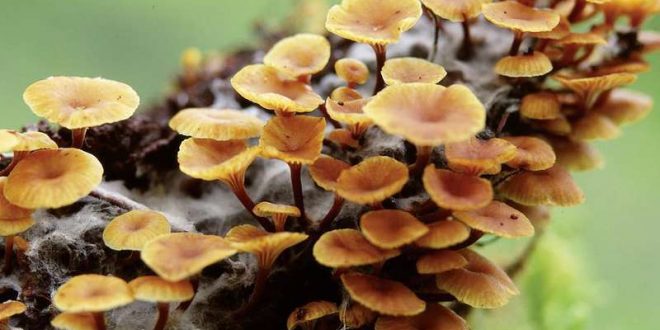


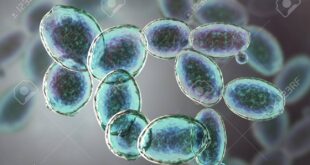
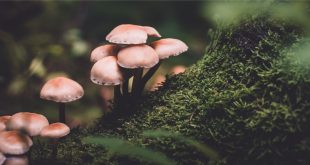
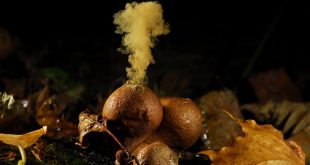
nice one..
I don’t think the title of your enticle matches the content lol. Just kidding, mainly because I had some doubts after reading the enticle.